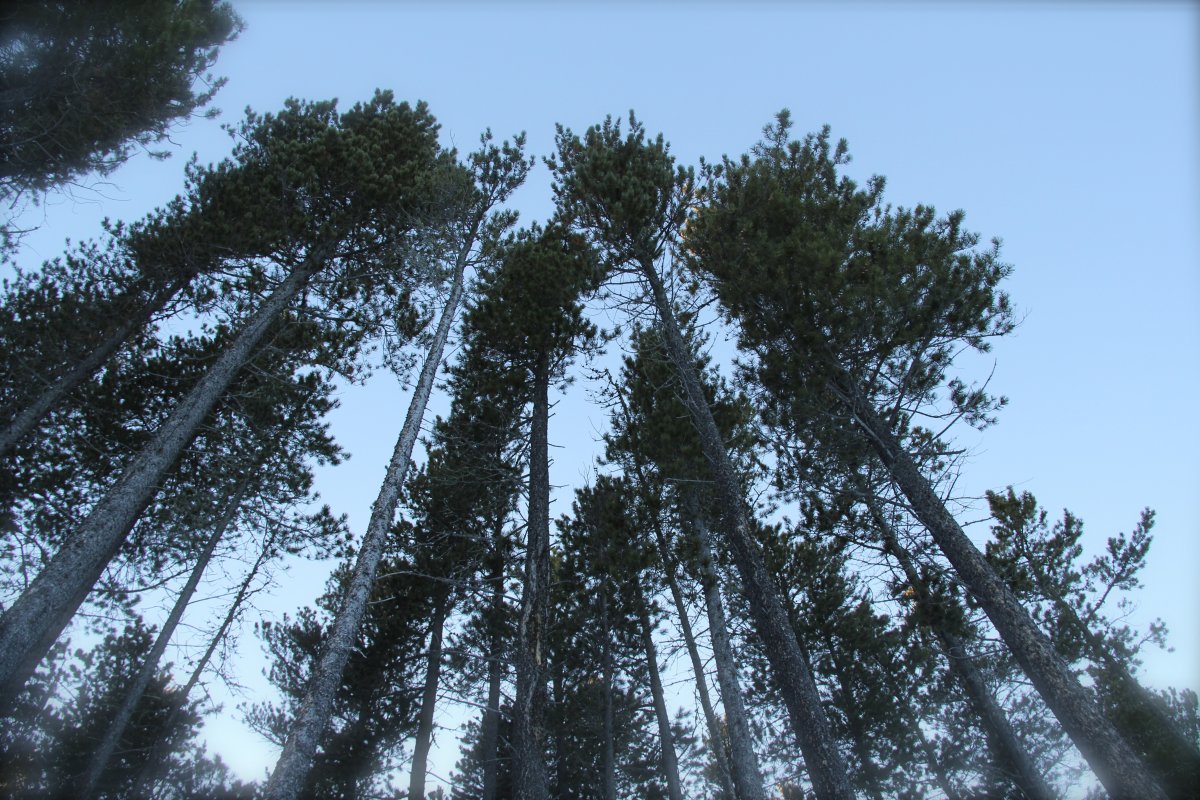It had been sunny the three days leading up to our trip to Cypress Hills and for the next week following it, but on the day we scheduled the most interviews, it poured. Just our luck.

I would also have blamed the rain for our running late, but the truth is even though reporters have the best of intentions when it comes to keeping scheduled interviews, we often get hungry. Such was the case when Derek and I rolled into Maple Creek at 11:30 am.
“I told the folks at Fort Walsh we’d be there at noon,” I lamented.
“Can you call them and tell them we’ll be late? I really need lunch,” Derek asked.
It didn’t take much convincing – The Star Café and Grill is one of my favourite restaurants in Saskatchewan. Plus, I work better on a full stomach.
We hoped that being a little later to our interview in Fort Walsh, we might have given some time for the rain to pass. It didn’t.
“Was it raining the day of the Cypress Hills massacre?” Derek asked me.
“I don’t think so,” I replied. “Can you shoot it in a way that makes it look like it’s not raining?”
Derek gave me a look.
If you’ve never been to Fort Walsh National Historic Site, it’s fascinating – and chilling. It’s hard to imagine living in the barracks the Mounties lived in – in the winter no less. It’s hard to imagine the isolation: they were so far away from any major city.
The site of the Cypress Hills massacre, just a kilometre or so away, is even harder to take in. A dilapidated trading post (a reconstruction, not the original) and a plaque is all that remains. Still, it’s hard not to hear the screams that must have rung out when the gunshots started.
The massacre lead to the fort’s construction and was originally intended to provide law and order to the area. However, less than a decade later, Mounties were used to carry out the Canadian government’s racist Indian polices. Treaty promises were broken and First Nations, who once numbered in the thousands in Cypress Hills, were moved to reserves hundreds of kilometres away.
I have always loved the Cypress Hills – this island of trees that emerges out of the open prairie. I feel a kinship with Chief Nekaneet, the only First Nations leader at the time, who evaded forced removal from the area – I wouldn’t have wanted to leave either.
From Fort Walsh, Derek and I attempted to locate the home of Elder Jean Francis Oakes on Nekaneet First Nation to talk about the reserve’s namesake. It should have taken an hour and a half. Clearly, Derek and I need to work on our navigation skills – it took us three hours.
I looked down at my smartphone – even if Nekaneet showed up on Google maps, we were out of the service area anyway. “We are officially lost,” I said after driving in circles for two and half hours. “We need to flag someone down and ask for directions.”
Derek gave me another look. I understood it was one of desperation – we hadn’t seen a single vehicle since we’d left Maple Creek. If we ran out of gas, I feared we’d be stranded on a more and more saturated back country road – maybe forever.
At just that moment, a van passed us. The driver was Dale Mosquito, a Nekaneet resident. He told us to follow him to the elder’s home.
“I’ve been waiting a long time,” Jean Oakes said before laughing at my sheepish face and very humble apology.
The interview went well after that.
“What kept you here?” I asked. Jean couldn’t explain it, other than to say there was a power the hills had to hold people there – even people who weren’t from there originally; once you experienced the natural beauty, you were hooked. I could relate.
“Is there anything else you’d like to add?” I asked to both Jean and Dale when we’d finished.
“I’d just want to thank you guys for coming out today,” Dale said. “A few years ago, I would have called it coincidence, but to go up that road, I think we were meant to sit here today to talk about this.”
“I think we were meant to meet too,” I replied, reflecting on the rain, the food, the hospitality from Parks staff at Fort Walsh, the chilling feeling from the historic site, the navigation trouble on slippery gravel roads…that all lead to this moment. Talk about the hills’ power – I couldn’t wait to come back.




Comments